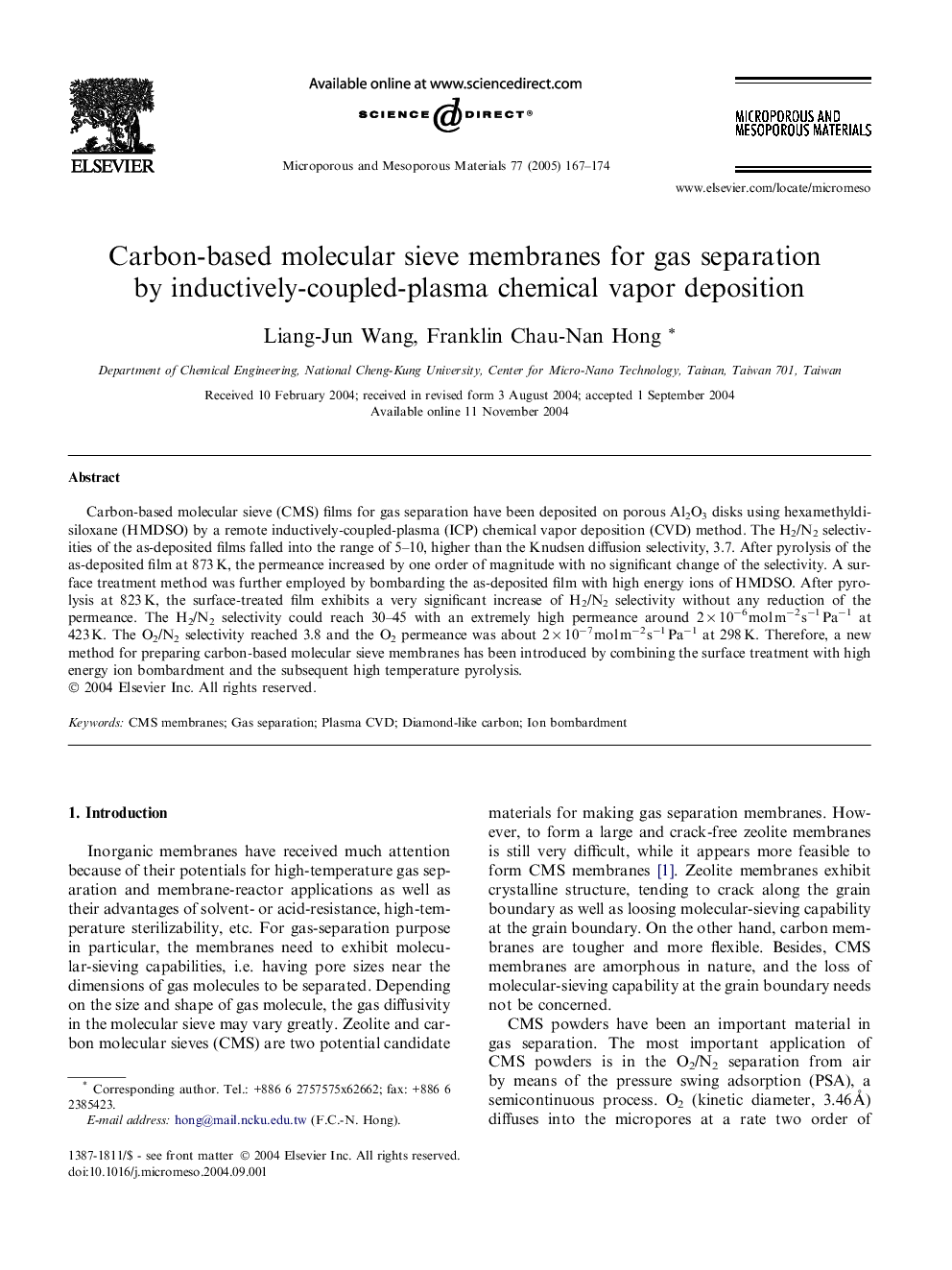| Article ID | Journal | Published Year | Pages | File Type |
|---|---|---|---|---|
| 9617856 | Microporous and Mesoporous Materials | 2005 | 8 Pages |
Abstract
Carbon-based molecular sieve (CMS) films for gas separation have been deposited on porous Al2O3 disks using hexamethyldisiloxane (HMDSO) by a remote inductively-coupled-plasma (ICP) chemical vapor deposition (CVD) method. The H2/N2 selectivities of the as-deposited films falled into the range of 5-10, higher than the Knudsen diffusion selectivity, 3.7. After pyrolysis of the as-deposited film at 873 K, the permeance increased by one order of magnitude with no significant change of the selectivity. A surface treatment method was further employed by bombarding the as-deposited film with high energy ions of HMDSO. After pyrolysis at 823 K, the surface-treated film exhibits a very significant increase of H2/N2 selectivity without any reduction of the permeance. The H2/N2 selectivity could reach 30-45 with an extremely high permeance around 2 Ã 10â6 mol mâ2 sâ1 Paâ1 at 423 K. The O2/N2 selectivity reached 3.8 and the O2 permeance was about 2 Ã 10â7 mol mâ2 sâ1 Paâ1 at 298 K. Therefore, a new method for preparing carbon-based molecular sieve membranes has been introduced by combining the surface treatment with high energy ion bombardment and the subsequent high temperature pyrolysis.
Related Topics
Physical Sciences and Engineering
Chemical Engineering
Catalysis
Authors
Liang-Jun Wang, Franklin Chau-Nan Hong,
